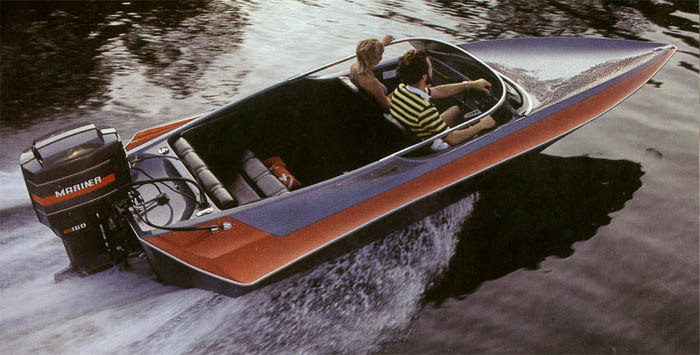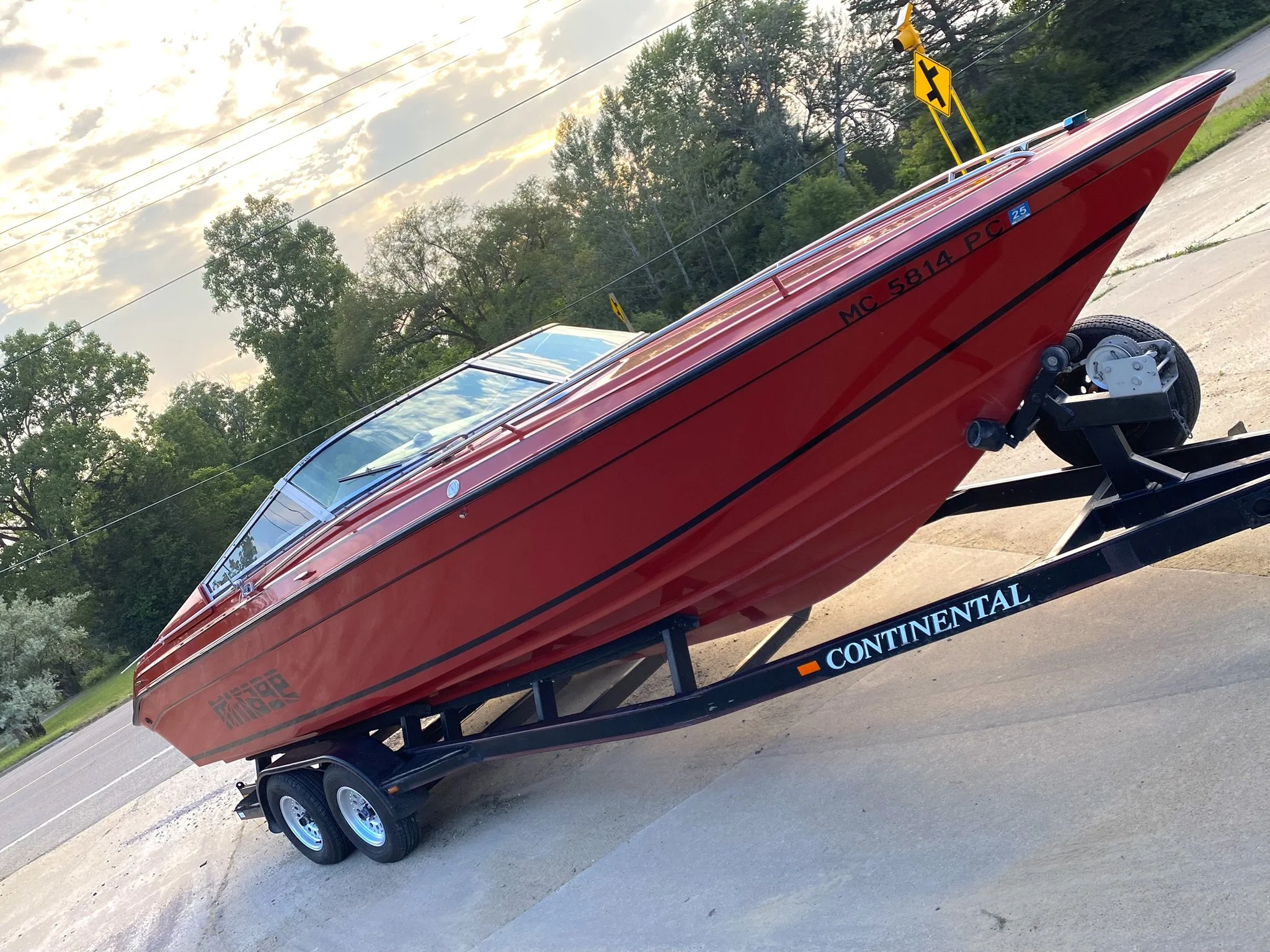Hydrofoils, Electric and the Future of Boating Technology
Last year I wrote an article about how mild hybrids could be an elegant solution for marine propulsion. A mild hybrid is a simple 48 volt system that replaces the starter and alternator, while also assisting the gas engine under acceleration. For around the dock and getting on plane, a mild hybrid would be fantastic for outboards and inboards, improving power and efficiency without adding weight or complexity. Recently, there has been big news about electric boat startups, electric boat racing and electric powered hydrofoil boats. I want to look at each of these and present an argument as to why they are poorly thought out. Quite simply, they don't work well in the real world.
Let’s talk about hydrofoils first. Hydrofoils have been around for a long time and in some cases they offer a couple of advantages. The most basic advantage is that they indeed lift the vessel out of the water and become mostly impervious to waves, offering a very stable ride. In really rough water, open water with large spans between waves, hydrofoils suffer and become a liability, particularly in small boats. The foil simply can’t lift higher than the peak of the wave and can make maneuvering very difficult. That’s not the biggest problem with foils though.
This is a hydrofoil on a Boeing 929 ferry boat in Hong Kong, with Rolls-Royce Allison 501KF Gas Turbine engines. I got to go on it, it’s crazy. The ride is incredibly smooth, which is a key advantage of a hydrofoil. These go around 45 MPH, very impressive for the 90 foot vessel.
Foils have another problem, the faster they go, the less efficient they are. My earliest exposure to foils was the Russian designed Volga, a narrow hull that was 29’ feet and was somewhat commercially successful. They usually ran a Volvo drive or direct drive with a small diesel and looked well ahead of their time. A gentleman on the lake I grew up on had one, so I have seen them up close, it was so unique that just seeing it was a bit of an event. The original Volga was first made in 1958 I believe. (valgacraft.com). Back to the argument, they cause drag and if you want to be efficient on the water, you want to reduce drag.
A Volga seen here being presented to President Nixon as a gift from the Russians. This boat actually served Nixon and other officials in Miami Florida and often ran to Key Biscayne where Nixon lived. (photo: valgacraft.com)
Many people see America’s Cup sailboats and see how fast they are and assume that foils would also be faster on a powerboat but that’s not the case. Sailboats do really well with foils because they need the lateral and directional stability in the water of a center board, keel and or dagger board along with a rudder. Foils can act as those things, offering stability, while lifting the hull out of the water, making sailboats faster. America’s Cup boats are only going about 40 to 45 MPH, fast for sailing, quite slow for a powerboat. I’m not a sailing expert but I did race Laser 2 boats for several years when I was young and have spent quite a bit of time on different sailboats and it is very obvious that what works for sailing doesn’t work for performance boats at all.
The drag part is important to point out because the marketing behind some of the new foil power boats suggests they are faster and more efficient, they are not. One brand “Candela” touts “How do you massively increase the efficiency of a boat? You fly.” That’s actually true but foils don’t fly, they drag.
A foil underwater. That is creating a significant amount of drag. Water is dense, you want to be on top of it, not in it. (thekiteboardermagazine.com)
If you combine the increased drag of a foil and the limited range of a battery electric propulsion system, you get a bad combination. Electric motors are ultra efficient and incredibly powerful but the constant drag and weight sensitivity of a small boat makes for a very limited range. The only solution is low speed, long range and there is nothing wrong with that, low speed cruising is a great use for electric boats. Duffy Boats figured this out decades ago. Hinckley Yachts also has a slow day cruiser called the Dasher that can cruise for 5 hours at 8 MPH and is 28’ in length. If you did want to try and combine speed and efficiency you would use the fastest hull possible, not a foil based design. A tunnel hull or light pad V design is far superior than a foil design.
The Hinckley Dasher is a great day boat for cruising slowly. Perfect for people who wear wool sweaters, pants with suspenders and have multiple golf club memberships. (www.hinckleyyachts.com)
Another electric brand from Sweden, X Shore, announced recently that they received funding to increase production for their 26’ open day boat. With power from Torqeedo, using BMW i3 batteries, the boat weighs a hefty 5,700 Lbs. The X shore is a combination of utilitarian meets green consumerism, with cork deck material and earth tone colors. Because electric motors produce incredible torque, it is no surprise you can achieve decent speeds in short spurts but the X Shore has a limited range, 70 to 100 NM at a slow cruise, using a 120 KW battery. Top speed is a reported 40 MPH. This is actually a pretty good execution for an electric, a practical design and a decent enough range. Starting at around $350,000, makes it a tough proposition though.
With all the buzz about electric boats in the last few years it is no surprise there was also rumblings of an electric boat racing series. Alejandro Agag, the man behind Formula E, wants to bring electric boats to a race course but it will be even more challenging than electric auto racing. For one, electric cars are incredibly fast, electric boats could be incredibly fast yet might not have the appropriate range. He does have a solid team, although their lack of boat racing experience shows.
The group commissioned a design startup called SeaBird Technologies to develop a boat and unfortunately they are going with a foil design, which will be slow and cumbersome. The company said they think it will go 69 MPH. Unfortunately, that’s not fast enough and the foil design will be very bad at those speeds. Consider a little F4 tunnel boat with 60 HP would be faster, turn better and generally be more exciting. A foil design is just the wrong direction, tunnels are vastly superior in efficiency and dynamics.
Even a small F4 tunnel boat with a 60 HP will beat the proposed electric race boat. The F1 boats are incredibly fast and probably the most exciting race boats in the world because of their acceleration and ability to turn at high speeds.
When I did our Allison Grand Sport project with the Mercury 150 four stroke, I always pointed out the fuel efficiency along with the speed. Some would remark that it is a performance boat, who cares about the fuel burn and I would reply that the fuel mileage is a mark of efficiency. Efficiency on the water is speed; the fastest boat is the most efficient boat. These companies are missing the most critical part, hull design.
The Torqeedo powered Zin Boat is trying to be more of a sport boat. I do like that front trunk in the bow. This looks like a boat designed by a car person. At least they got the seating right and it’s a closed bow.
The Zin Z2R boat pictured above makes all the mistakes you would expect, starting with the inefficient design. At 20’ the complete package weighs about 1,750 lbs. With Torqeedo power, about 80 HP equivalent, the Zin Z2R does about 45 MPH, although the company limits it to 30 MPH for production. And with a cruising speed of 17 MPH, it can achieve 100 miles of range.
The designer claims the boat was tested up to 55 MPH but “was insane” which is another clue you have a bad design. (www.techcrunch.com/2020/08/11) To be fair, I think the Zin Z2R looks pretty cool and for a first time effort is pretty good. That said, it is obvious the people who designed it don’t know much about boat design, it actually looks like an old runabout from the fifties. At $250k it’s mostly a novelty project. You could buy an Allison, which is far more efficient and tow it with a Tesla and still have lots of dough left over.
When you hear about electric technology on the water you often hear the awkward claim “It’s the Tesla of boats.” I can assure you none of the boats mentioned are even close to being a Tesla on the water. At best they are luxury boats with golf cart level performance. Admittedly, I have no problem with that. The Duffy and others have been making little day boats for a long time; slowly cruise around all day, no maintenance, it’s a great use case. I have even seen small vintage boats using converted small electric outboards to use in rentals on small protected waters. Again, great use case. Battery density may improve, costs will come down and the all critical charging speed will also improve further enabling more use cases for boats but don’t hold your breath on the all electric 300R killer. That said, if performance was your goal, you could replace the powerhead of an outboard with an electric motor, slide a battery pack in and with the right hull you would fry all the attempts so far.
If you want to go green, just get a sail boat. This one has an electric auxiliary for good measure.
The Allison SS 2000 is probably the most efficient 20’ boat design on the planet. With 90 HP four stroke the sleek hull has achieved 70 MPH. With a 45 HP Honda it did 52 MPH.














